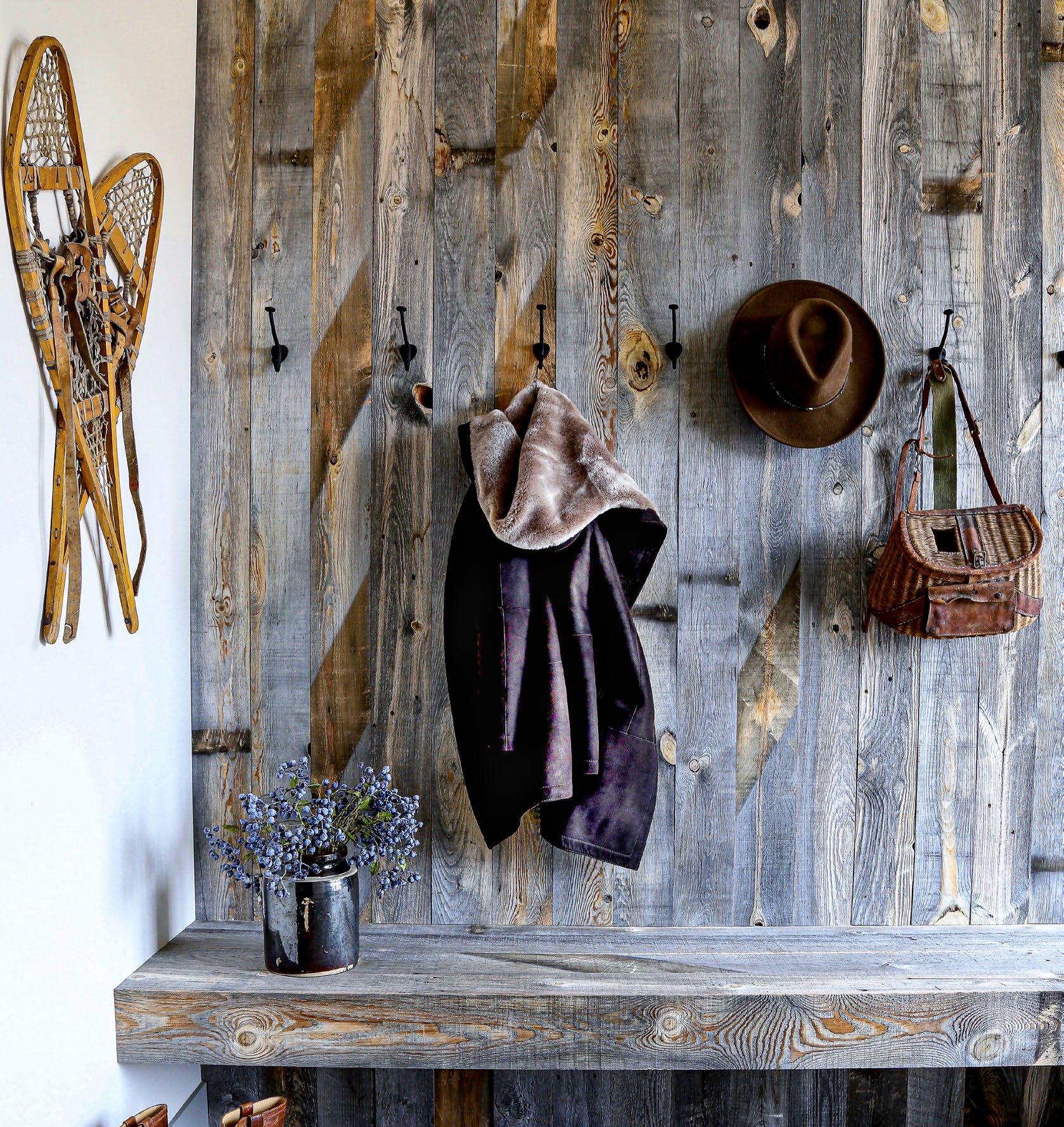
15 minute read
Inspired By Nature Snowshoe in a winter wonderland
INSPIRED BY NATURE
Park City ofers an abundance of outdoor activities to enjoy nature in the mountains, including alpine, backcountry and cross country skiing, sledding, snowmobiling and even dog sledding. One of my favorite ways to enjoy a beautiful winter’s day is snowshoeing or winter hiking. It’s such a lovely way to appreciate the beauty of the mountains and forest in complete serenity. You can rent snowshoes at various ski rental shops around town. If you are interested in booking a guided tour, contact White Pine Touring, and join a tour on local trails or in the backcountry (Uintas), a moonlight tour (fabulous under a full moon!) or a historic tour in town.
Advertisement
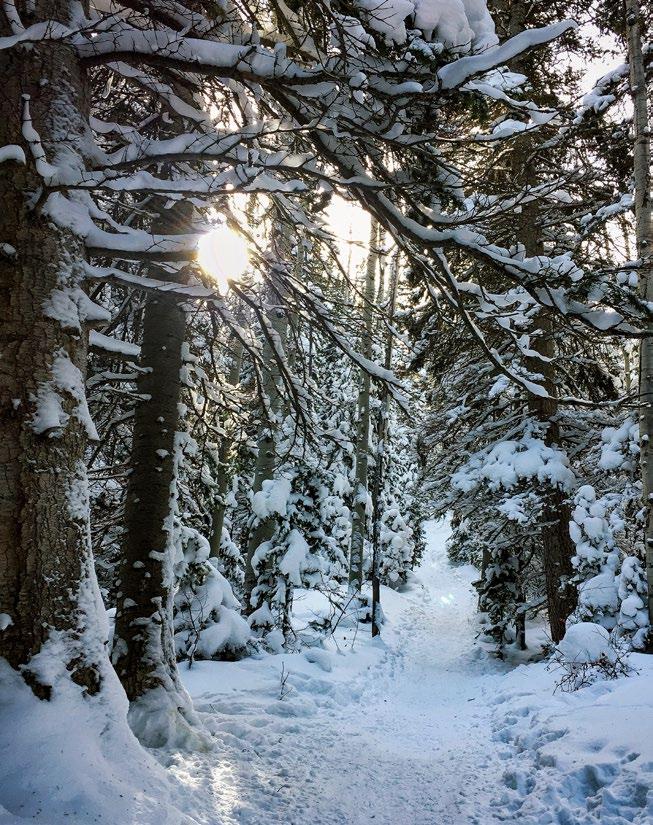
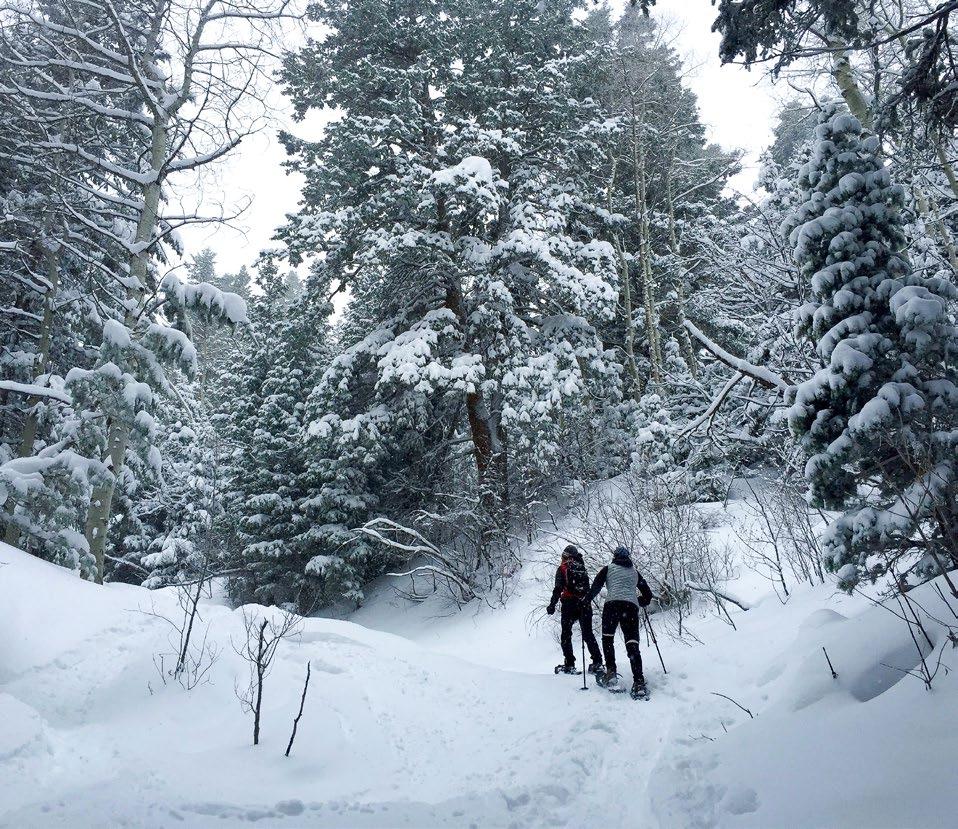
For even more fun, pick up a sled at Jans. The best sleds in the world are Merikan Missiles! They’re similar to Swiss Bob sleds, and they cruise down a snowy trail at the speed of lightning! Lightweight and easy to carry, I strap them onto my back with adjustable straps purchased at REI so I can have handsfree hiking. My favorite trail for hiking up and sledding down is Iron Mountain (in the Thaynes neighborhood of Park City).
https://www.jans.com/

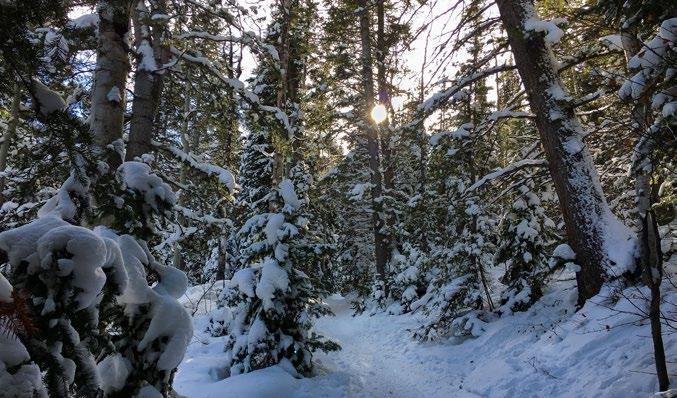
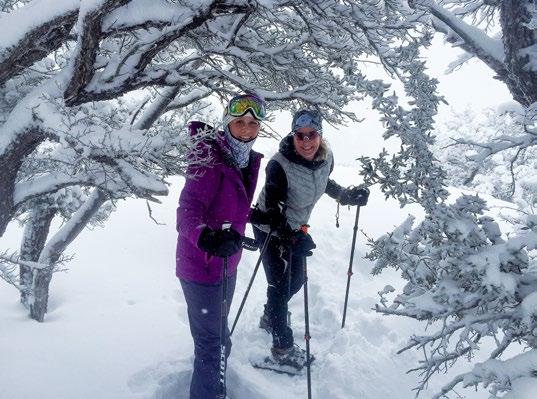
In the workshop with...
LEVI WILSON
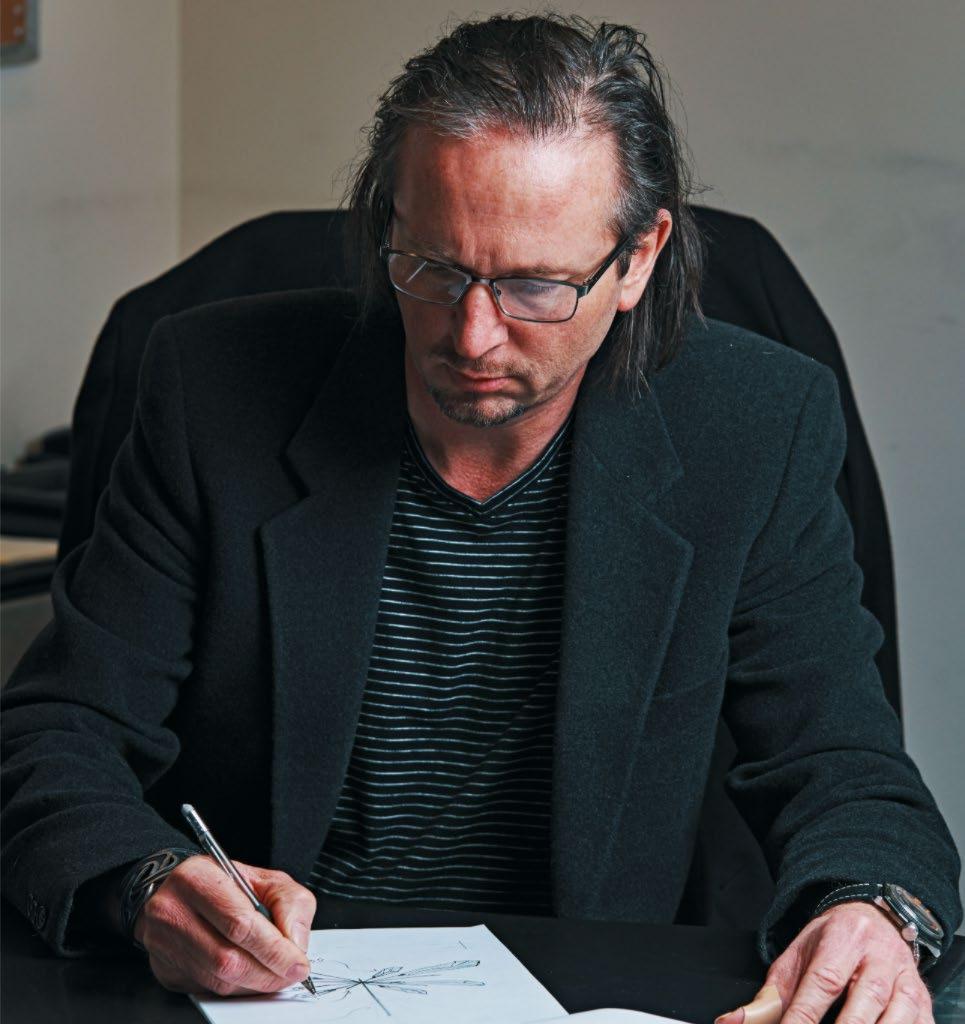
of Hammerton
One of my favorite companies to utilize in my design work is created entirely from an idea to a fnished product at Hammerton, a high-end lighting company based in Salt Lake City, Utah. What impresses me deeply is the fact that Hammerton fabricates both the metal work AND the glasswork all under one roof. The company employs 20 glass artisans (mouth blown glass as well as cast glass and kiln glass), 20 metal fabricators and 20-30 experts in paint and fnish. Each piece is made by hand in their Salt Lake factory. It’s an amazing process and the artisans are extremely talented. Hammerton designs three collections: 1) Studio Collection (a predetermined set of fxtures with a selection of fnishes/options), 2) Signature Collection (fxtures are customized where anything is possible) and 3) Contract (fxtures for hospitality/commercial projects).
It was an absolute delight to sit down with Utah native Levi Wilson and learn about his fascinating background and how he came to be Cofounder of Hammerton. He currently serves as Vice President of Design and is the creative fame behind the many gorgeous fxtures shining in beautiful residences and commercial spaces all over the world.
Wilson’s ofce is captivating, with beautifully rendered sketches everywhere (he draws them by hand, the old-school way), as well as elements of designs in process for new creations in the works. I loved getting a sneak peak of new fxtures coming soon! Touring the factory is also inspiring, with artisans at work fabricating metal and blowing glass. It is a hive of activity and production, and the results are exquisite!
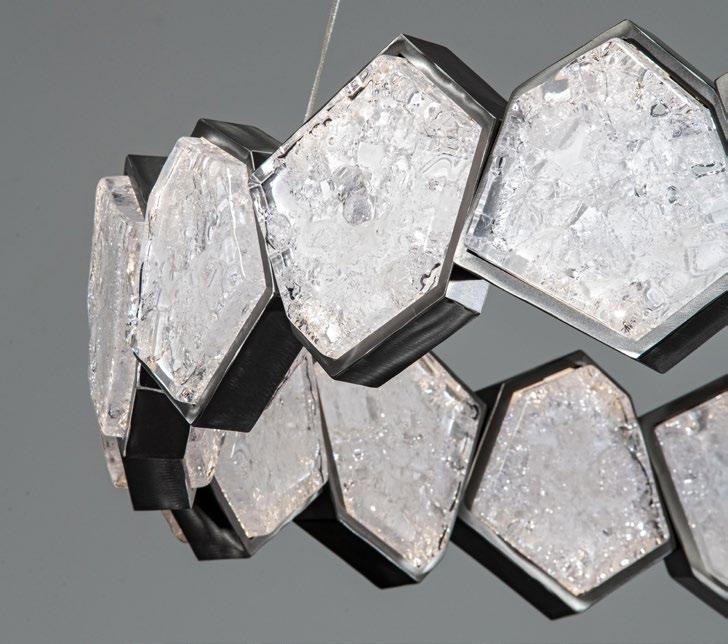

During our discussion, we completely lost track of time, caught up in the lively, inspiring conversation that occurs when two rights brains go down the rabbit hole in the design world. We both returned to our homes with our creative brains swirling and found it difcult to fall asleep! Wilson grew up in a home where the creative arts were prevalent. His father was an ornamental iron craftsman and his mother was a seamstress. He worked as a youth in his father’s shop and learned to make his own clothes at age 6 or 7. He says, “I was exposed to two diferent worlds: The brute force needed for blacksmithing and the complete opposite… the fnesse, detail and softness associated with sewing clothes.”
Wilson’s unique background and formative years, immersed in craft and design from a very young age, developed his creative mind and honed his attention to detail, shaping his career path.
After high school, Wilson began studying at the University of Utah, with the plan to study architecture. He went to Europe to study abroad and, while traveling in France and Italy, he was deeply impressed and informed by the ornamental iron works and architectural details that are so prevalent and took so long to create. “I came back with much more of an appreciation for metal work and what could be done, as well as for design and architecture in general.”
Upon returning to the US, Wilson and a friend took a long road trip up the west coast. They visited the historic Timberline Lodge on Mt Hood, Oregon, where he noticed the beautiful, handcrafted iron lighting fxtures. He says, “The beginning of Hammerton was actually that visit to Mt Hood. Coming from Europe, and a very decadent society, to Timberline Lodge, which was built in more of a wild west era, and seeing the duality between the two diferent constructions methods was a very good visual contrast for a case study. I loved how, at the lodge, the design was very crude… rawhide stitched with thick lacing, so raw and bold. That crude workmanship was the core principle of frontiering the West.”
Wilson and a friend started a business called Mountain Moose Design. They fabricated roof racks and bumpers for SUV’s, which led to building mailboxes, freplace screens, candlesticks and fxtures for second home clients. The timing was ideal, as the Olympics Games in Salt Lake were approaching and there was an increase in construction in Park City, as well as a growing second home market. Hammerton was born in 1995.
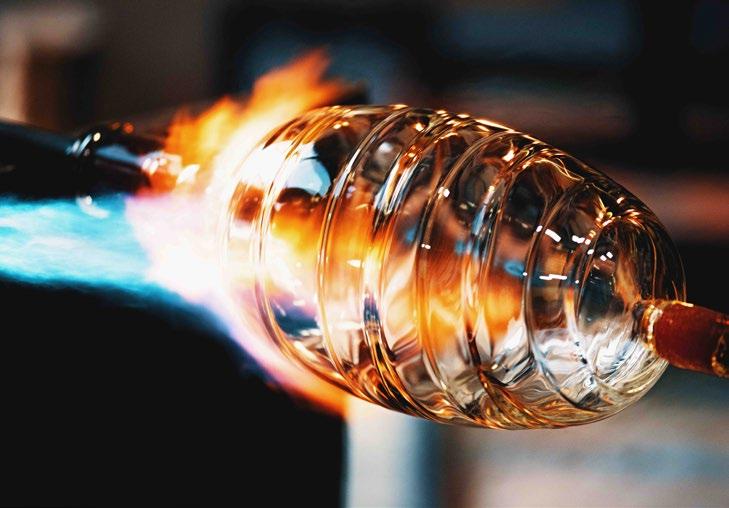
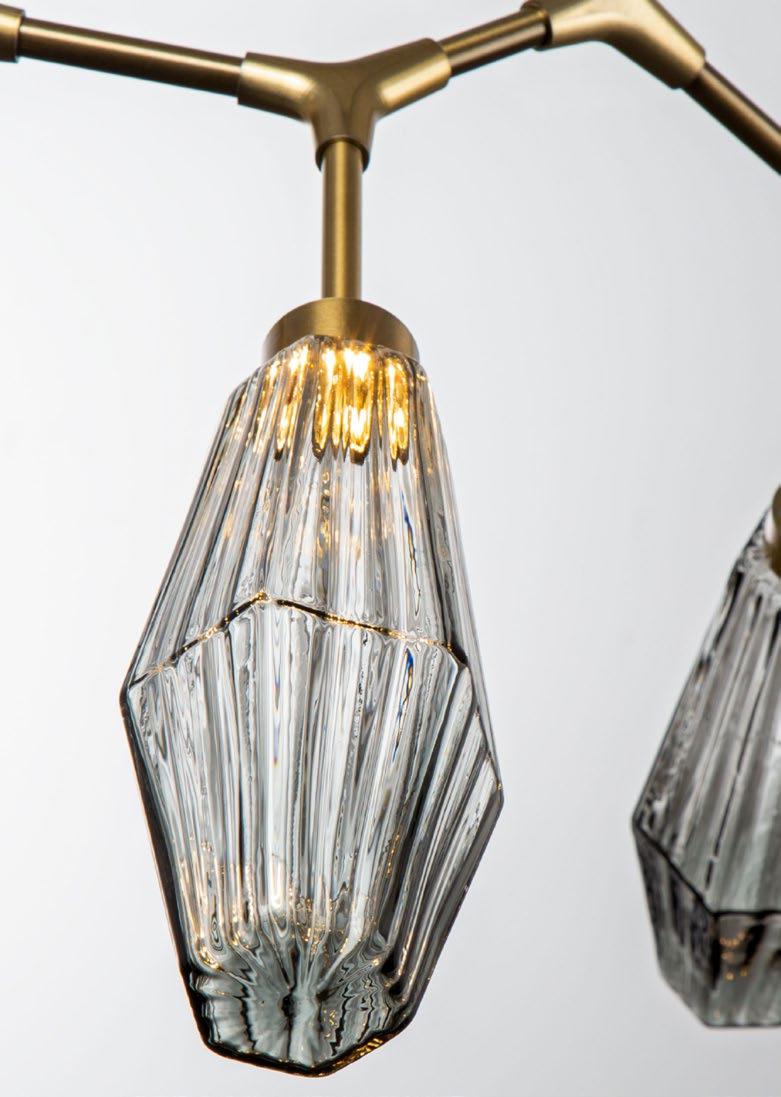
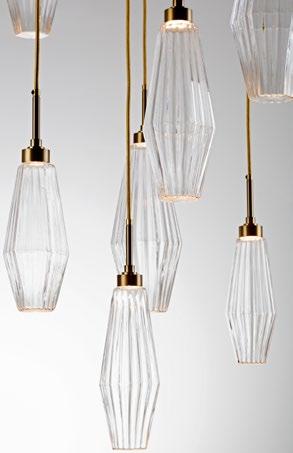
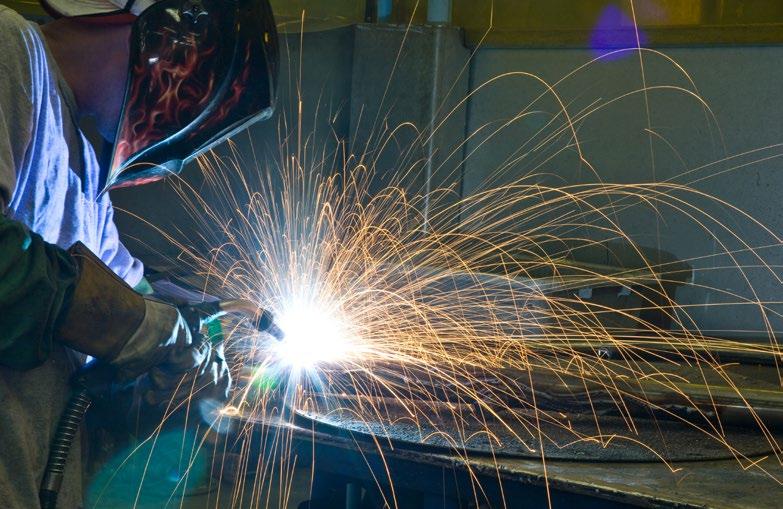
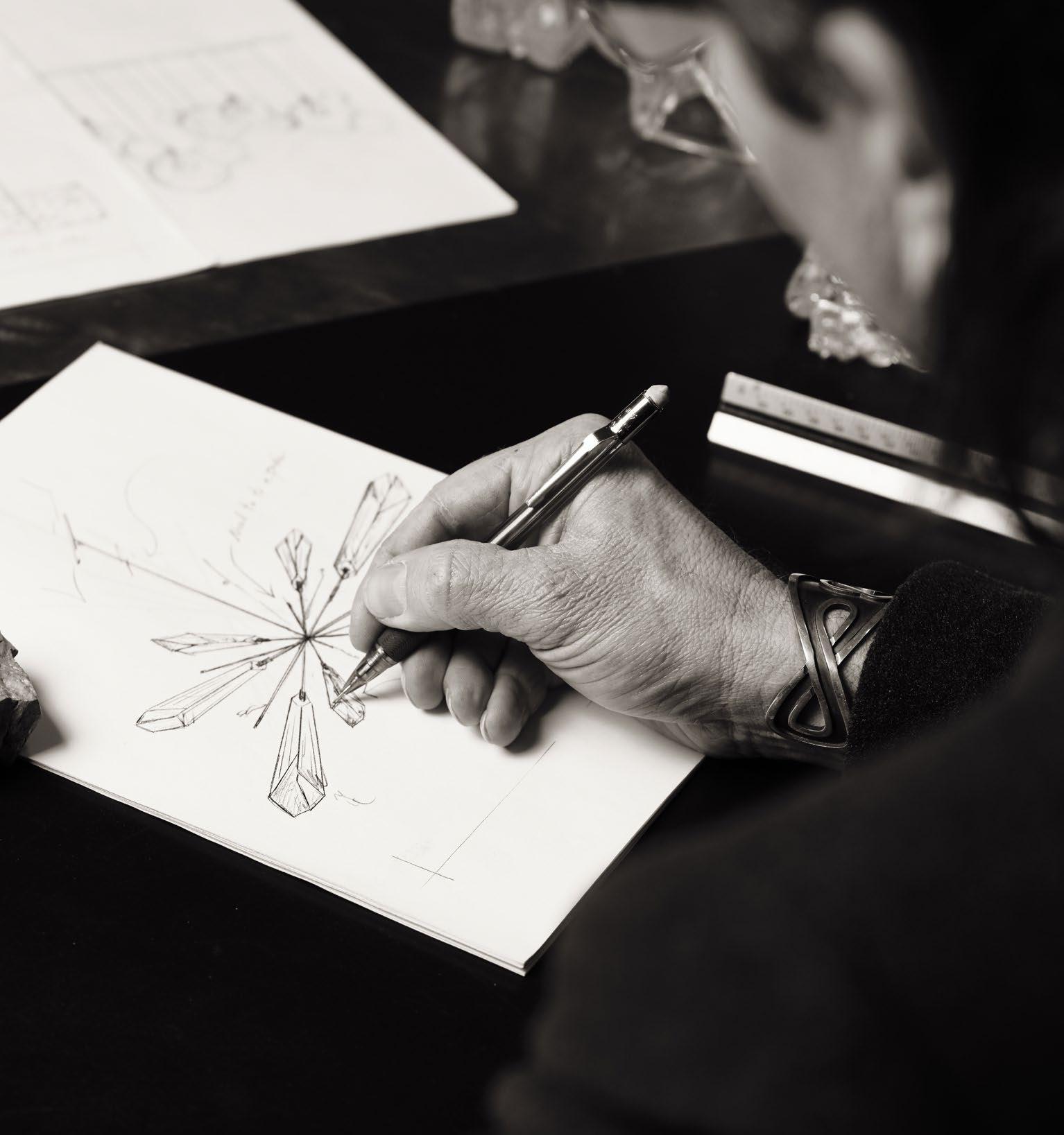
WHAT IS THE INVISIBLE PART OF THIS WORK? CAN YOU DESCRIBE IT?
All the mistakes that occur in getting to the point of completion. All the things we don’t see. Consider a good symphony, or a song that we like. If we don’t know how to write a song and if we don’t know the principles of music, all we can judge it by is whether or not we like it, but we can’t explain why. A musician can say why it’s good. In design, the same principle applies. People look at it and, using their intuition, respond positively or negatively, but can’t necessarily tell you why it works or not. So, for me, the invisible work is all of those mistakes leading up to that point… all the things I tried that didn’t work. I look at it and it doesn’t feel right, so I’d better try something else. This is what goes on behind the scenes that people aren’t thinking about.
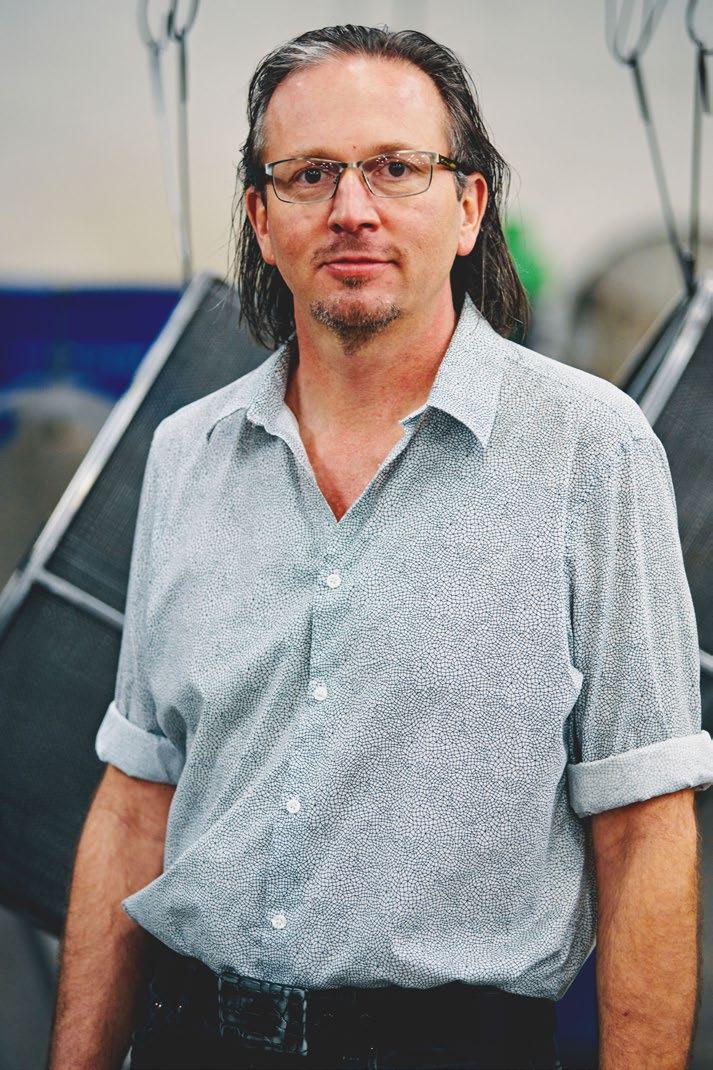
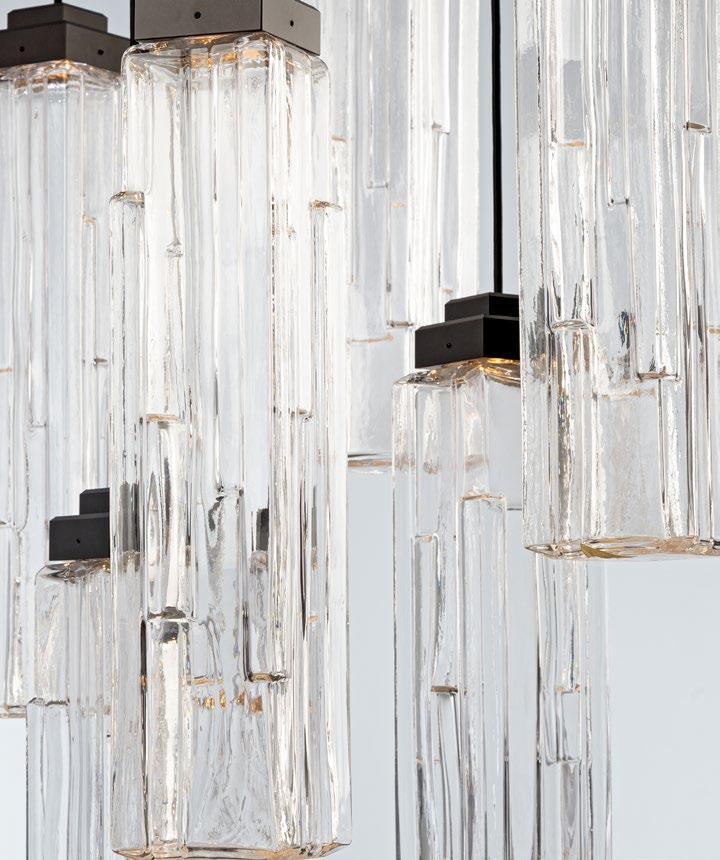
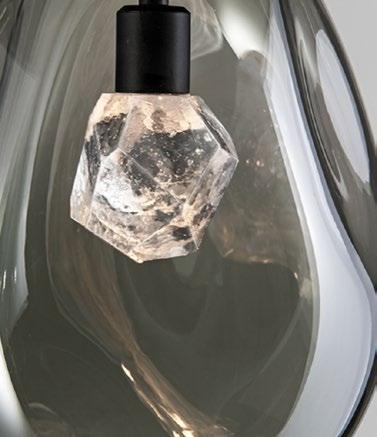
WHAT DOES GOOD DESIGN MEAN TO YOU?
I look at it the same way I view fne art at a museum. The frst and core principle to me is will it last for generations? Will someone want to hold on to that item? First and foremost, and without hesitation, it has to be generational for a good design to work. If it can be a throw-away item or substituted, it’s not good design. Good design could and should be valued for multiple lifetimes.
I always get absorbed in objects and things that we use, and I try to think about what is involved in their creation… the art and craftsmanship. I think it’s probably helped in my design process because I know the back end of what’s required to go out and weld it, hammer it, forge it and do all of the artisan work. But, from a design standpoint, I’m looking at it from the fashion industry. Really good fashion is all about the really fne details. Take a beautiful handbag, for instance. It comes down to the essence of the stitching; the buckle and which sheen it is… high gloss, satin or matte? Then, the quality and feel of the leather. Every detail matters.
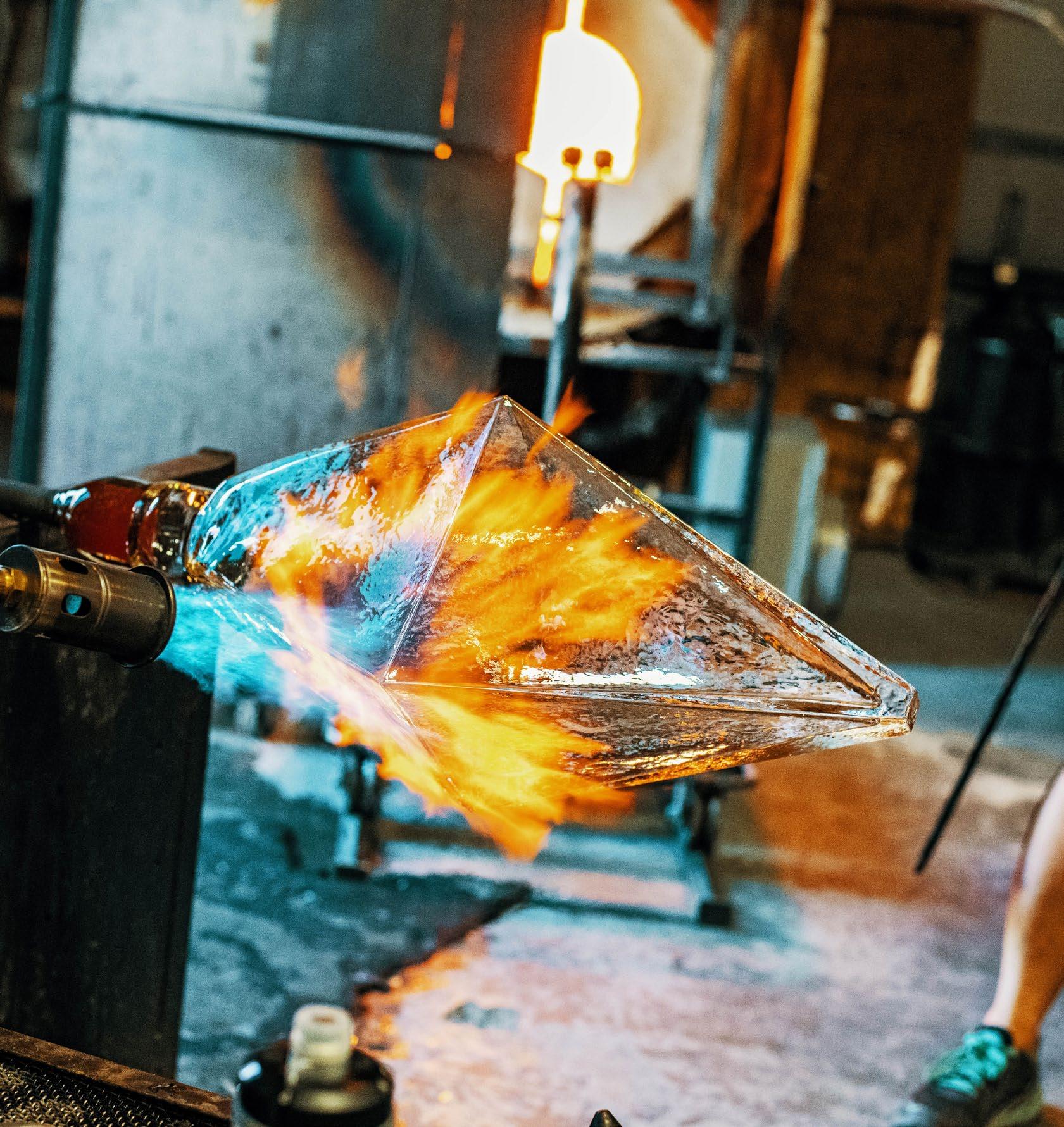
WHO AND WHAT ARE YOUR BIGGEST INFLUENCES?
My parents, who gave me the raw tools to do what I do.
I certainly appreciate and give respect to good design, whether in my own industry or other industries. I value something that looks like it took time and energy to create, rather than something that looks as if it was quickly put together. I fnd inspiration everywhere I look, in the products I come across. But, honestly, my greatest inspiration is nature. If we start boiling certain designs down or look closely at the way certain products were built… if we dive deep enough to look at the purpose and function of an item and why it was created in the frst place, it all comes back to nature. Why was a piece of clothing designed… a wool jacket, for example? Because it was cold. Then you have an itchy neck, which leads to the creation of a soft scarf. The purpose and function of an item is as important as the visual aspect. No matter how beautiful we make things, as human beings, it doesn’t take very long when we spend time in a beautiful place in nature to feel inspired in what we do and create. An example of how nature inspires my work is the Element chandelier. I’m fascinated with the nature in what we don’t see. There is a whole other world that exists beyond the naked eye. When I was researching for the design of the Element, I asked myself, “What do I want to design? What’s really inspiring me?” I dove into science and started looking at quartz crystals… how they are formed and what the structure looks like. It’s interesting to learn about the term “chirality”in nature. A quartz crystal starts out symmetrical, but as soon as it begins to grow, it becomes asymmetrical. So, when you look at the structure of a molecule and Element fxture, you’ll be able to identify the design inspiration for that product.
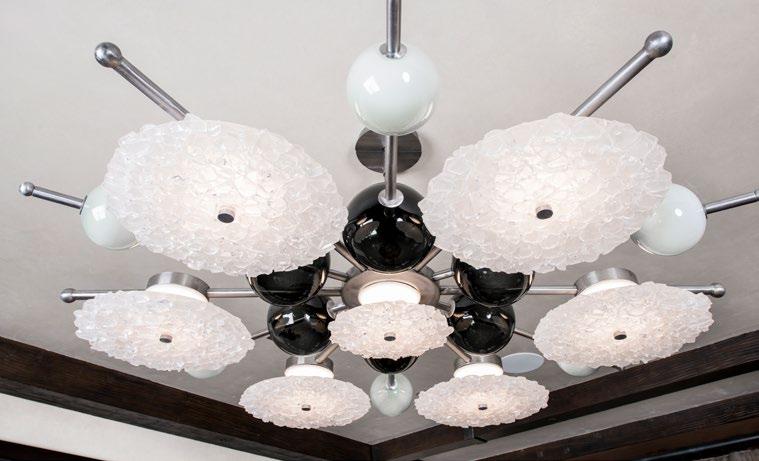

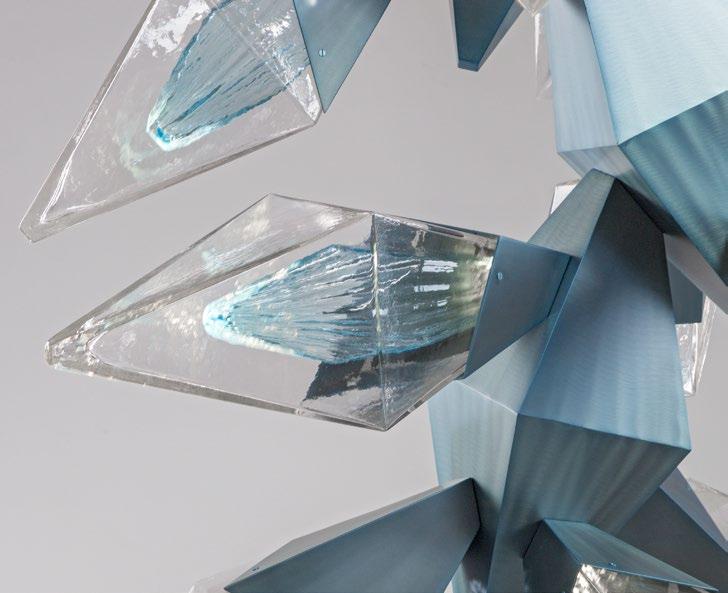
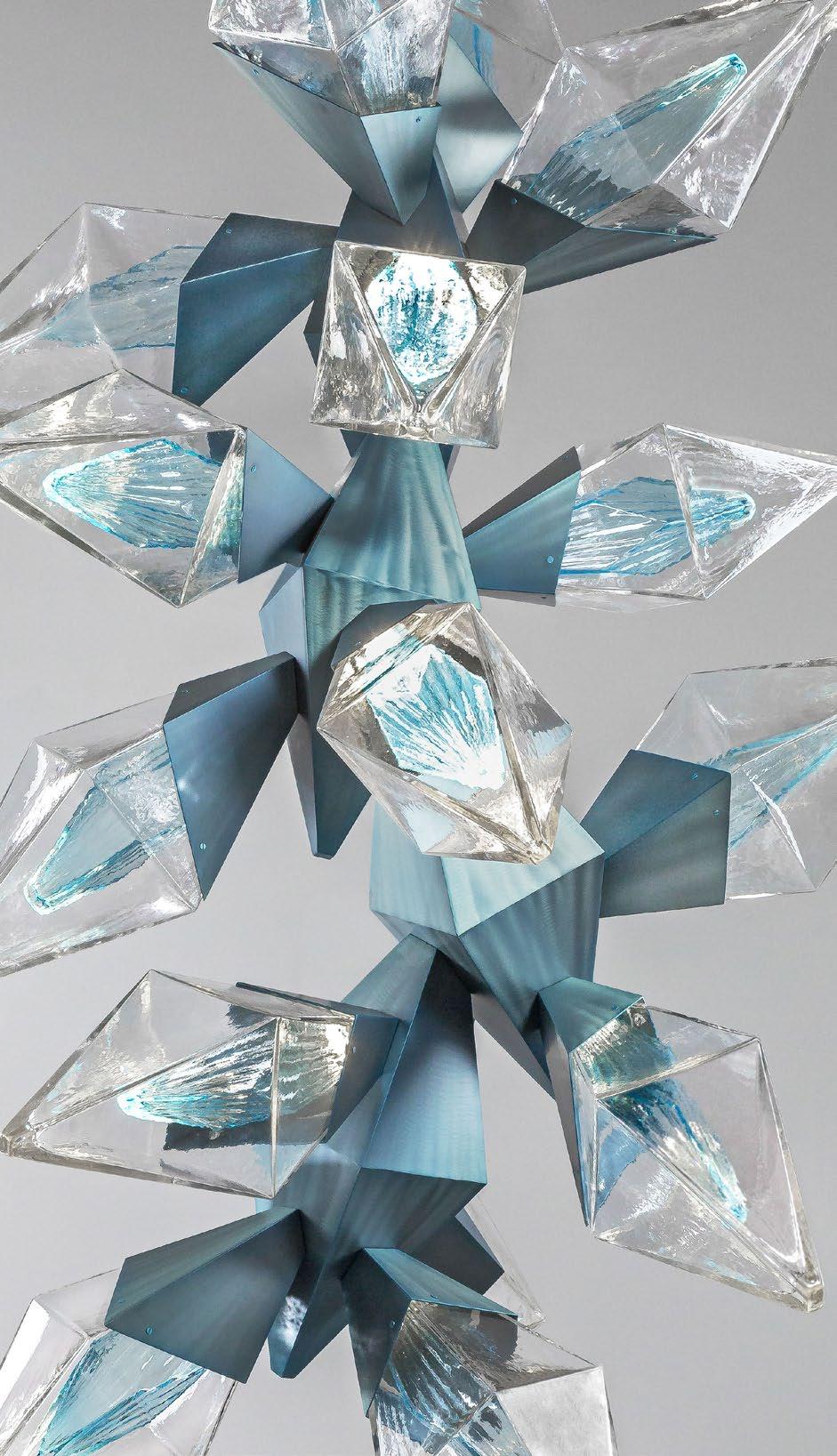
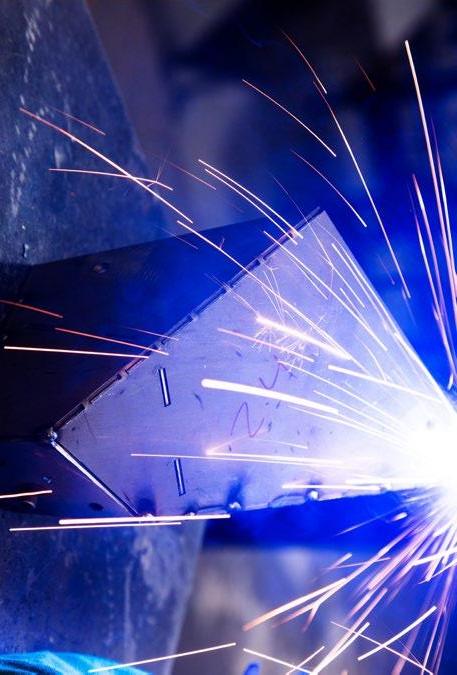
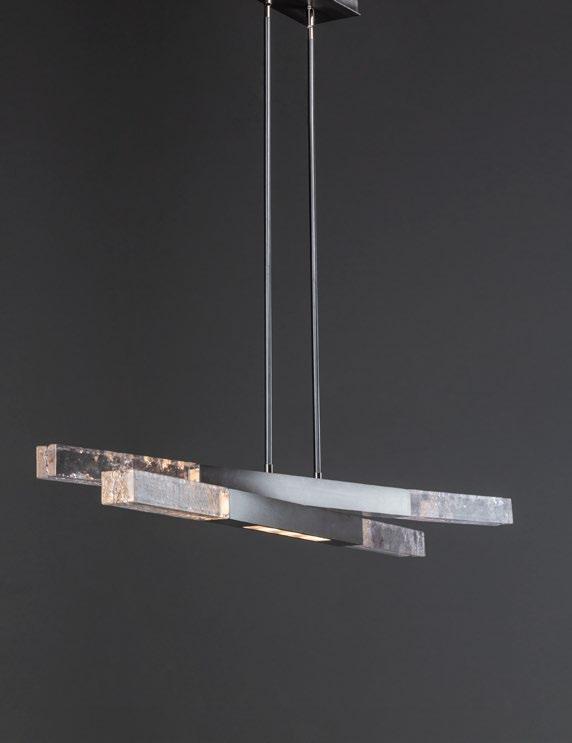
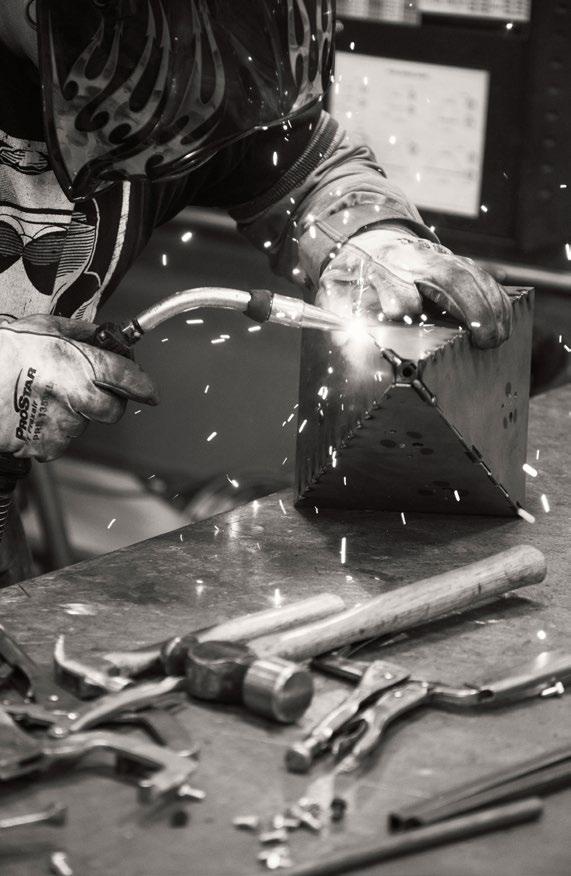
A residence in Vail, Colorado, which had an unlimited budget that allowed me to design completely one-of-a kind and unconventional custom lighting fxtures, but with architectural constraints, as well as the request for fxtures that would be gorgeous, but not compete with an incredible Dale Chilhuly glass sculpture in the stairway. This project is what initiated our foray into glass work at Hammerton, just 4-5 years ago. My inspiration for one of the fxtures was a glass stone. The design I came up with meant many months of experimentation, trial and error. We worked the glass designs in clay sculpture, then in 3D on the computer. Then we transformed those drawings to laser-cut parts to weld back together as a steel mold. That allowed us to blow the glass in a specifc form. All the mistakes resulted in a whole new way of glass blowing that I had not seen before anywhere in the marketplace. That project yielded the Gem Collection and most of what we see in the Studio Collection today. I had this fxture custom made by Hammerton for a Park City home, in hopes the glass would resemble shards of ice.
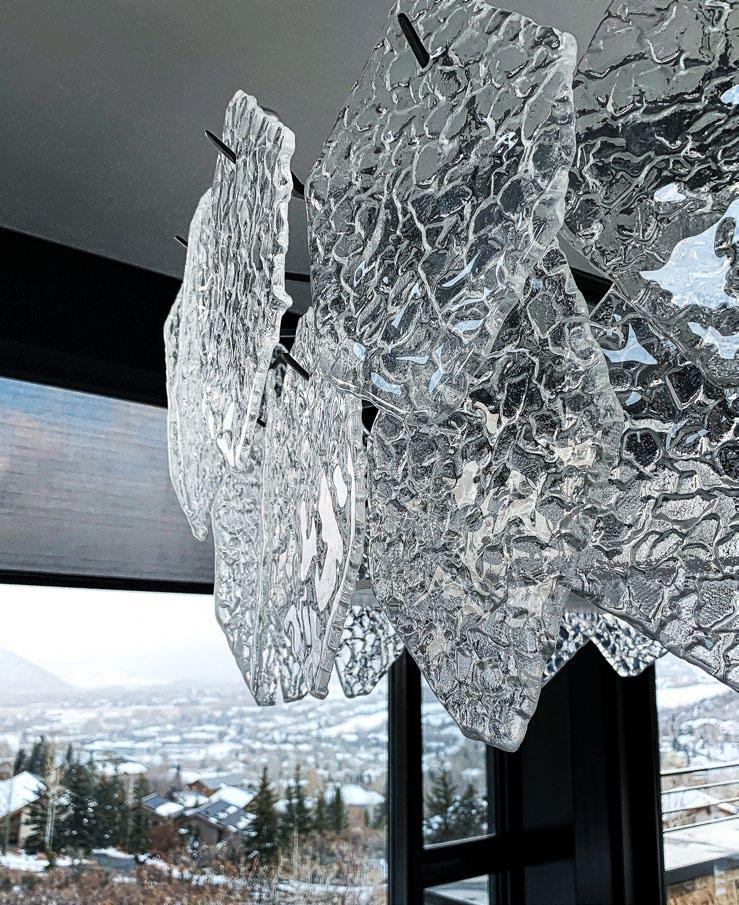
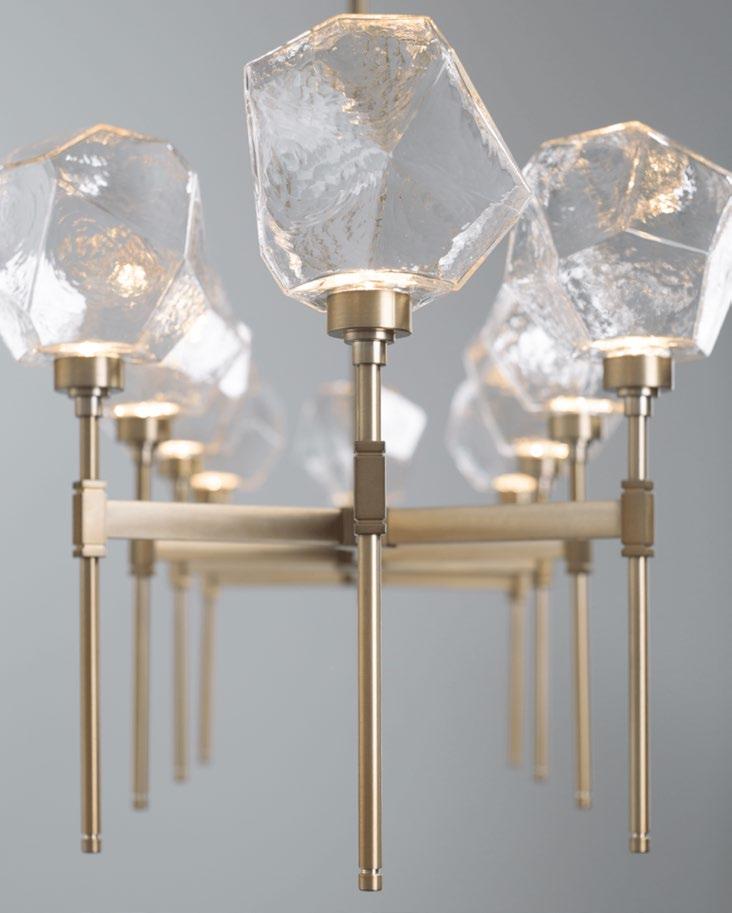
WHAT DESIGN TRENDS DO YOU PREDICT FOR THE NEXT DECADE, AS IT RELATES TO HIGH END DESIGN?
What is luxury in the next decade? To me, luxury will be natural materials. Products that look, feel and actually are handmade and will look handmade. I think we will start to see more demand for products that have that story, which is the material needs to be authentic or the craftsmanship needs to be authentic, and you need to be able to SEE it, rather than read about it. We, as a human race, have become so good at making things perfect.
Hammerton is available to the trade.
https://www.hammerton.com/ Follow Hammerton on Instagram: @hammertonlighting
In the workshop with...
BRIDGETTE MEINHOLD
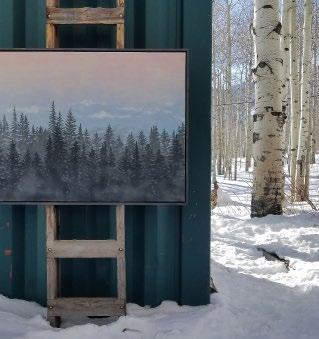
The breathtaking mountains and forests of the Park City area are captured beautifully in the art work of encaustic artist Bridgette Meinhold. She layers inky trees and mountain landscapes with milk paints and diaphanous coats of beeswax and pigment, creating ethereal and moody landscapes with visual depth. It is mesmerizing to gaze at her work, sinking into each quiet scene as if you are there, enveloped in the peace and serenity every image exudes. One can almost feel the gauzy mist or evening stillness among the forest and peaks.
While she enjoyed dabbling in art in her youth, Meinhold’s journey to becoming an artist was atypical. Rather than attending art school, she chose the academic route at university, earning two degrees in engineering; a BS in Mechanical Engineering from San Diego State University and an MS in Civil and Environmental Engineering from Stanford. Originally from Oklahoma, she wanted to experience living in a ski town. So, after living in Europe for a bit and while waiting to hear from grad schools, she landed in Park City in 2004.
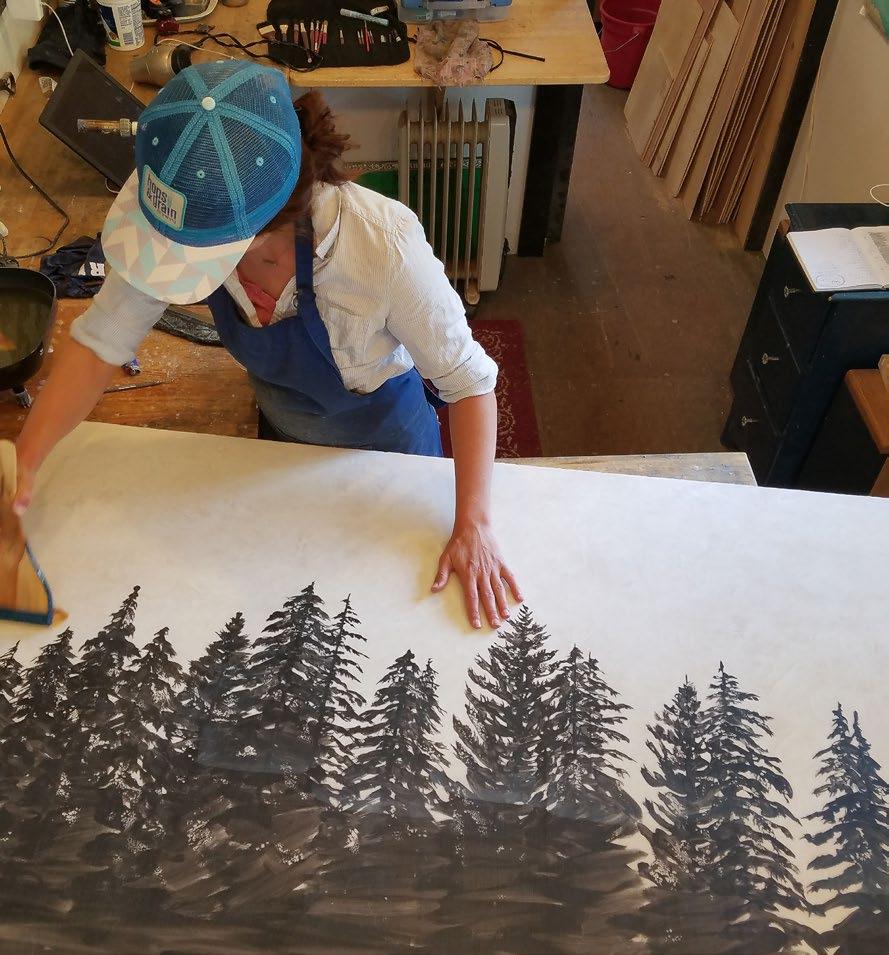
Image credit: Bridgette Meinhold
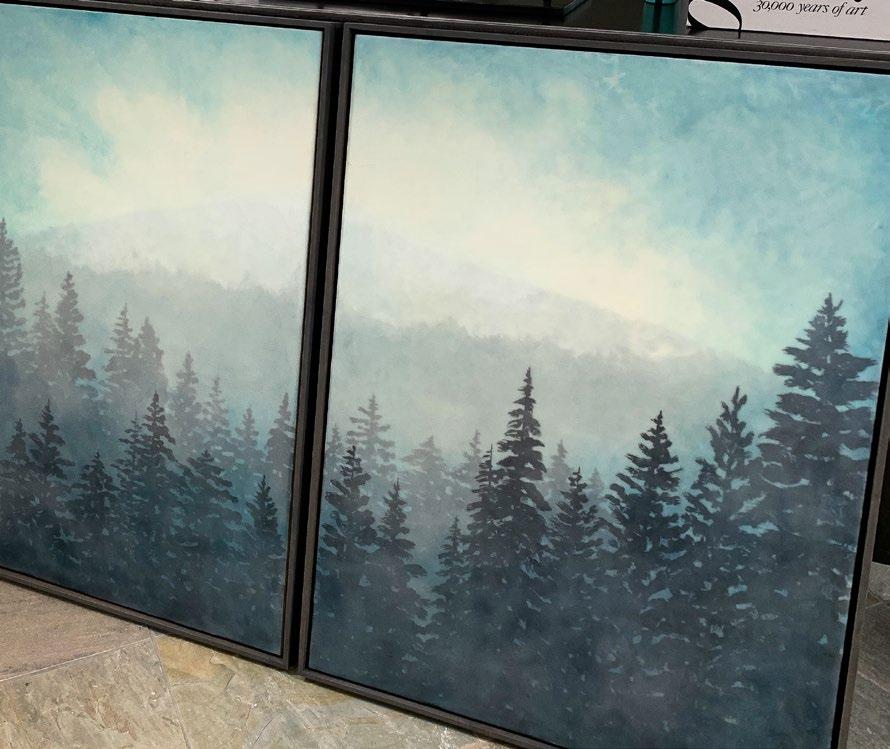
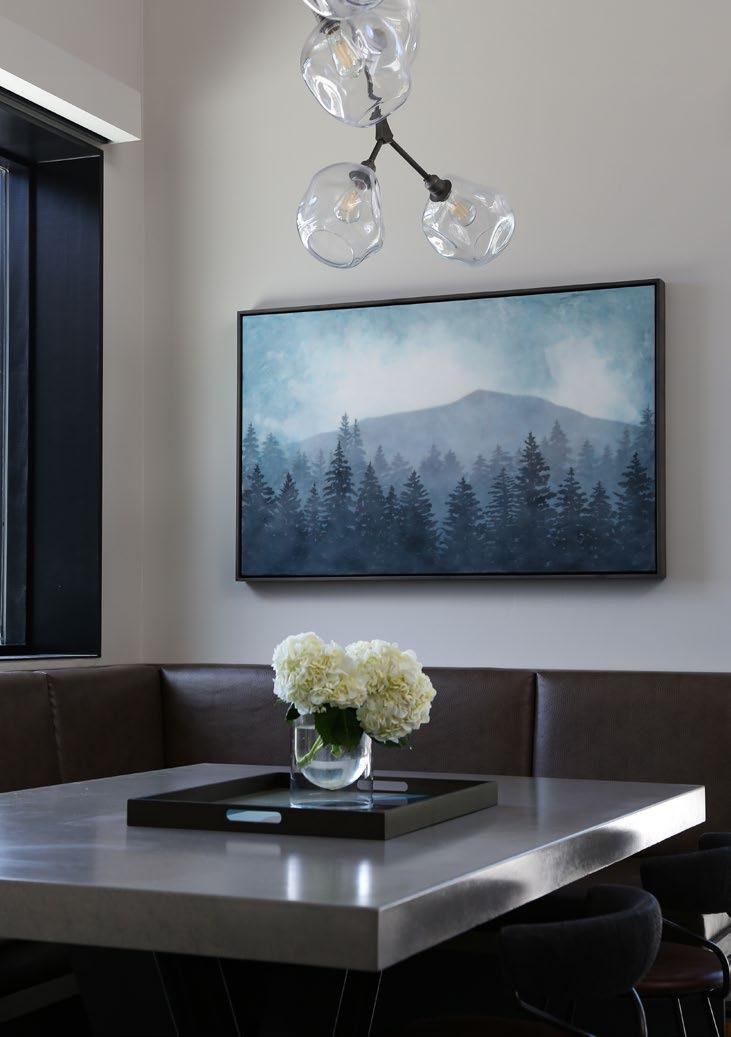
The mountains took hold of Meinhold and, many years later, Park City remains her home. Prior to becoming an artist, she spent time working as a sustainability consultant, writer, private chef and author. She met her husband, Matt, here, and the couple lives in an aspen grove just outside town in a little A-frame cabin, accessible only by snowmobile in winter. Meinhold paints full time in her studio (a shipping container beside her home) and spends her free time immersed in the mountains. In winter she skis from her doorstep into the backcountry and in the milder seasons she mountain bikes, hikes and flls her sketchbook with the surrounding scenery. She enjoys creating her own inks from fora and fauna which she collects from the landscape. Meinhold is also a writer and has written two books; Urgent Architecture (about sustainable housing solutions) and Down Deso (a book in artistic, journal-like format detailing her rafting trip down the Green River through Desolation Canyon, Utah, where her journey in becoming an artist unfolded).
Meinhold is a self-described naturalist and lover of nature. “The weather, trees, the mountains and the natural world are my infuencers,” she says. That is clearly evident in her evocative work.
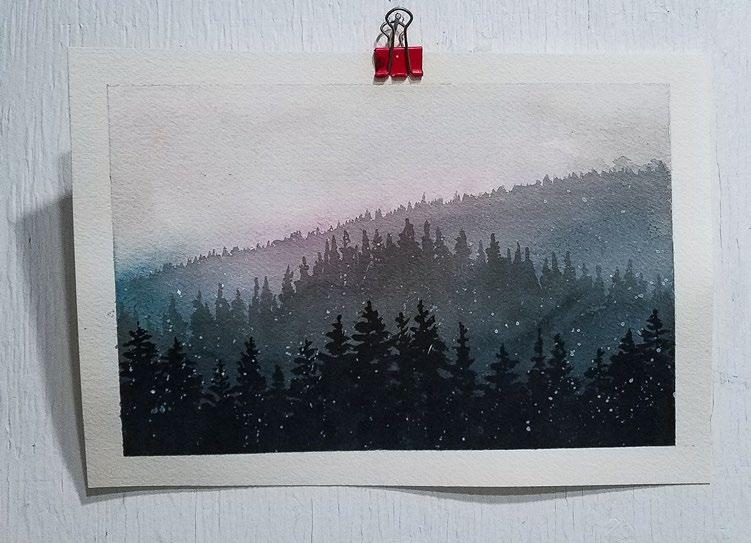
Images credit: Bridgette Meinhold
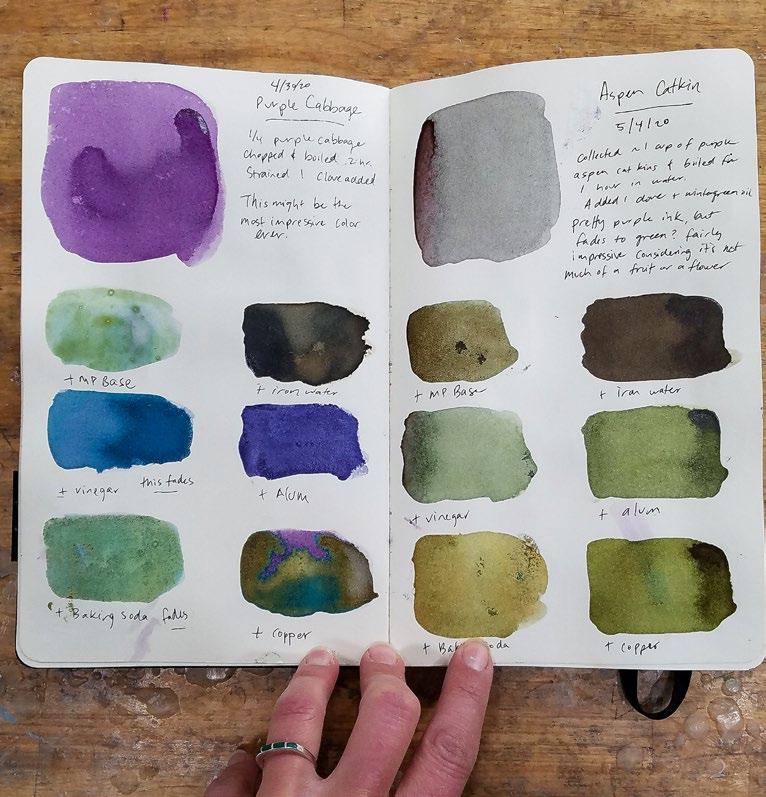
In Park City, Meinhold’s work is available for sale at Gallery Mar: Gallery Mar
Her art can also be purchased through the Sundance Catalog, which sought a collaboration with the artist: Sundance Catalog
Learn more about Bridgette Meinhold: www.bridgettemeinhold.com
Follow the artist on Instagram: @bridgette-meinhold
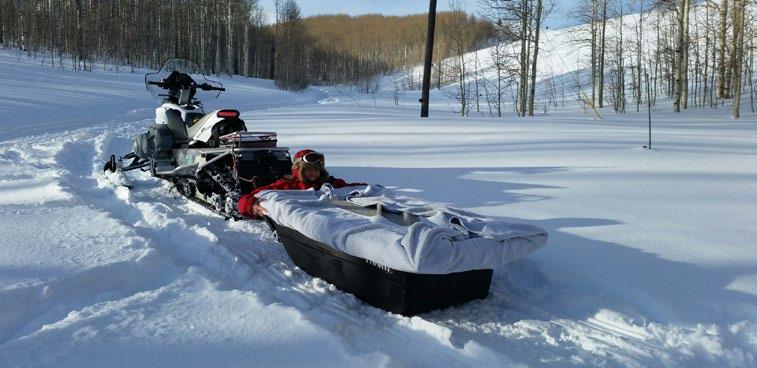
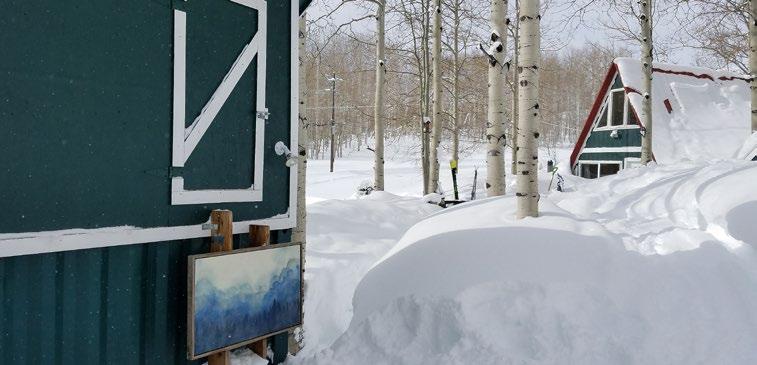
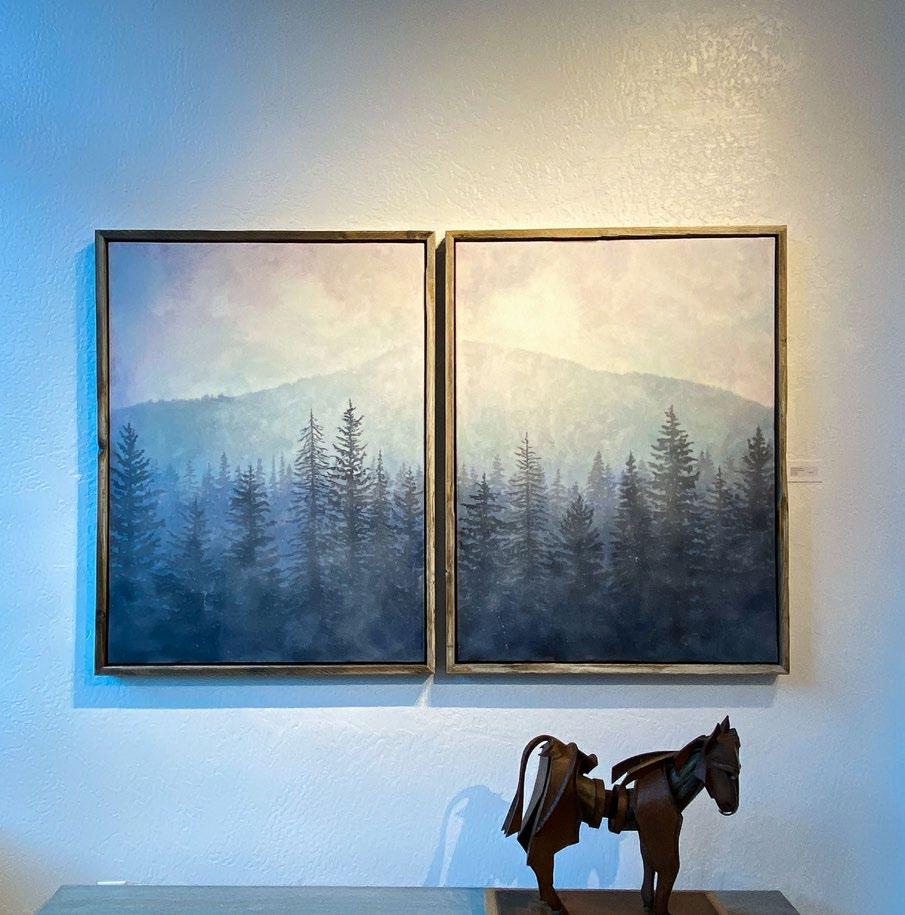
HOW DID YOU DEVELOPED YOUR CAREER AS AN ARTIST & CONTINUE TO GROW IN THIS AREA?
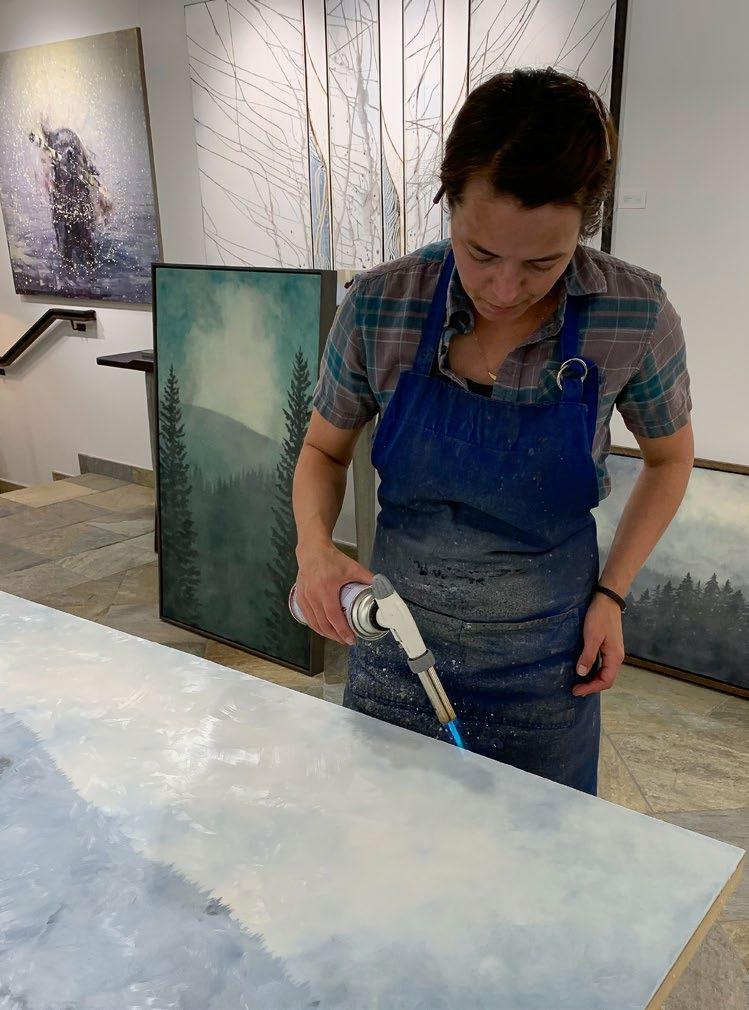
I often dabbled in art and entered my work in a couple of shows several years ago, before exhibiting regularly at galleries and painting full time. I continue to practice and paint a lot to improve the skills I already have and to develop new ones I want. I take a class or workshop at least once a year in some form of art to learn skills and learn from other teachers. But mostly it’s just consistent practice and time spent making.
HOW DID YOU COME TO FOCUS PRIMARILY ON ENCAUSTIC ART?
After taking a workshop in encaustic back in 2009, I really enjoyed the medium, so I kept playing with it and practicing with it until I hit upon a style that I enjoyed and resonated with other people. I’ve been painting with encaustic for over 10 years now.
WHAT IS YOUR DREAM PROJECT?
I’d like to someday be the artist on an outdoor research expedition.
WHAT IS IT ABOUT THE ENCAUSTIC MEDIUM YOU LOVE?
I really enjoy the organic look and feel of the encaustic, but primarily why I use it is because the wax acts the part of the atmosphere in my paintings and helps me achieve the look that I am going for.
WHAT DOES YOUR WORK AIM TO SAY?
I am trying to share my love of the natural world with viewers of my work and if I can either help them also to appreciate nature or at least enjoy a few moments of stillness, then I consider my job well done.
WHAT KEEPS YOU INSPIRED?
Spending time in nature is my biggest source of inspiration, otherwise, I like experimenting, practicing and learning new skills.


